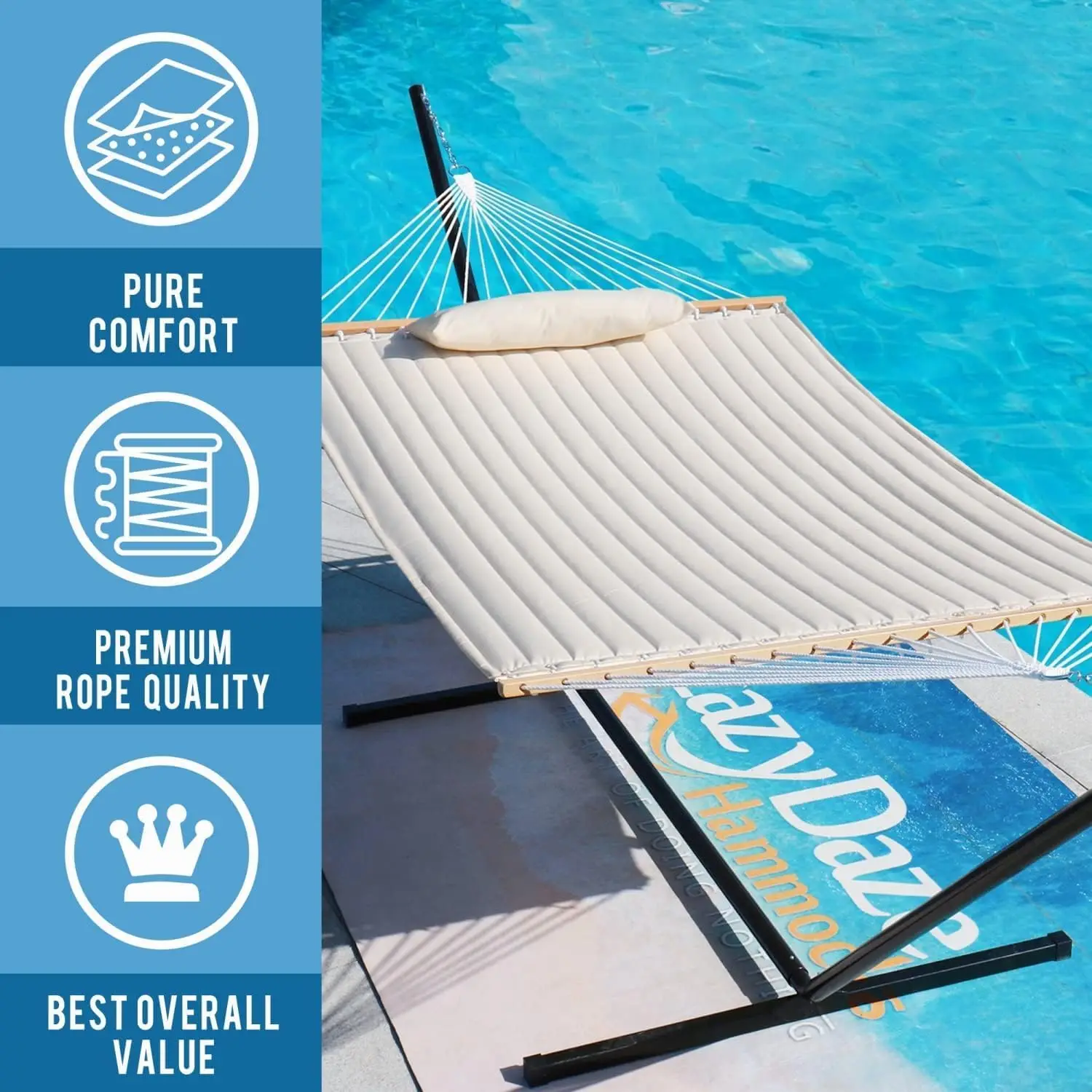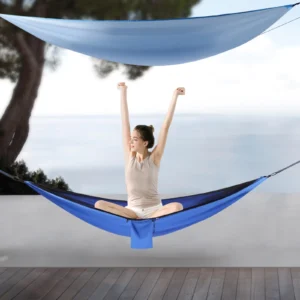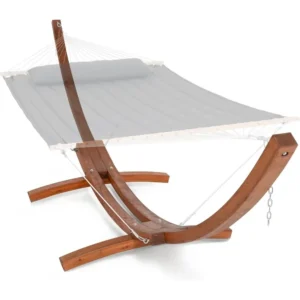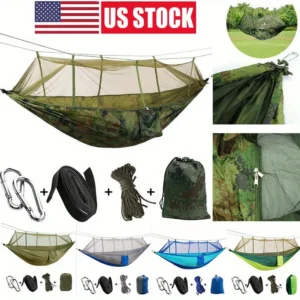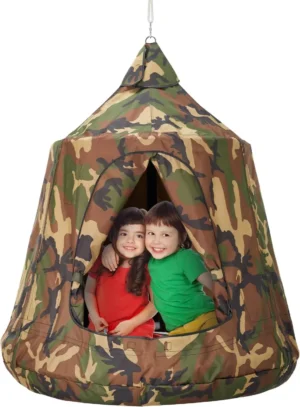Introduction: The All-in-One Outdoor Relaxation Solution
Hammocks with integrated canopies represent the evolution of outdoor lounging, combining the comfort of a traditional hammock with built-in protection from the elements. These comprehensive systems integrate three essential components: the hammock itself, a bug net, and a rainfly or sunshade—all working together as a single cohesive unit.
The advantages of these integrated systems are substantial:
- Simplified Setup: Everything works together by design, eliminating compatibility guesswork
- Time Efficiency: One installation process rather than multiple separate components
- Space Optimization: Integrated systems often pack down smaller than separate pieces
- Complete Protection: Seamless coverage from sun, rain, and insects without gaps or weak points
- Enhanced Stability: Components designed to work together create a more stable system
Whether you’re a dedicated camper seeking lightweight shelter, a backyard enthusiast wanting bug-free relaxation, or someone looking to lounge comfortably at the park, integrated canopy hammocks offer a practical solution. Throughout this guide, we’ll explore the best options on the market, essential features to look for, and how to select the perfect system for your specific needs.
Understanding the differences between indoor versus outdoor hammock placement can help you maximize comfort regardless of your setting. If you’re already convinced about the benefits, you might want to browse our selection of hammocks with integrated canopy protection to find your perfect match.
Our Testing Methodology: How We Evaluated These Hammock Systems
At Outside Luxe, our assessment process goes beyond basic product specifications. We field-tested each hammock system across diverse conditions to evaluate real-world performance. Each product underwent rigorous examination across these key metrics:
- Protection Effectiveness: Tested during sunny afternoons, unexpected rain showers, and in mosquito-heavy environments
- Comfort Assessment: Multiple testers of different body types evaluated sleep position options and overall comfort
- Durability Challenge: Stress-testing of attachment points, zippers, and fabric resilience
- Setup Complexity: Timed setup trials for both first-time and experienced users
- Portability Factors: Measured packed size and weight against manufacturer specifications
- Feature Analysis: Evaluated practical usefulness of additional features like storage pockets and ventilation systems
- Value Assessment: Compared price against performance and durability expectations
Our hands-on approach included overnight testing in various weather conditions, ensuring our recommendations reflect genuine user experiences rather than theoretical performance. This methodology allows us to confidently guide you toward systems that deliver exceptional protection and comfort.
For those specifically concerned about insects, our collection of hammock systems with integrated bug protection offers specialized solutions designed to keep unwanted visitors at bay.
Best Overall: Havana Pro Expedition – Superior All-Weather Protection
The Havana Pro Expedition stands out as our top recommendation, delivering exceptional performance across all testing categories. This premium system combines thoughtful design with high-quality materials to create a truly versatile outdoor sleep solution.
Specifications:
| Feature | Details |
|———|———|
| Weight | 3.2 lbs (1.45 kg) |
| Packed dimensions | 7” × 9” × 4” (18 cm × 23 cm × 10 cm) |
| Hammock dimensions | 10’ × 5.5’ (305 cm × 168 cm) |
| Canopy coverage | 42 sq ft (3.9 sq m) |
| Materials | 70D ripstop nylon hammock, 30D silnylon rainfly, No-See-Um mesh bug net |
| Weight capacity | 400 lbs (181 kg) |
| Included accessories | Tree straps, aluminum carabiners, guylines, storage sack |
| Price range | $$$$ |
The Havana Pro Expedition excels in all-weather protection, with its oversized rainfly providing excellent coverage even during heavy downpours. The rainfly’s asymmetrical design creates extended coverage at the head and foot while allowing proper ventilation to prevent condensation buildup.
The integrated bug net uses ultra-fine No-See-Um mesh that effectively blocks even the smallest insects while maintaining good visibility and airflow. The dual-zipper entry system allows easy access from either side, eliminating awkward entry struggles common in lesser designs.
Comfort is exceptional due to the hammock’s pre-angled end loops that create a flatter lay than traditional hammocks. Multiple internal storage pockets keep essentials organized and within reach.
Pros:
– Outstanding rain protection with extended coverage
– Superior bug protection with fine-mesh netting
– Intuitive setup with color-coded connection points
– Excellent ventilation prevents condensation
– Multiple storage pockets for organization
– High weight capacity accommodates most users
Cons:
– Premium price point
– Slightly heavier than ultralight options
– Takes practice to achieve perfect rainfly tension
The Havana Pro Expedition is ideal for serious campers and backpackers who want one system for all conditions and seasons. Its versatility and thoughtful design make it perfect for extended trips where weather conditions may vary.
Our collection of complete hammock solutions with integrated features includes this model and other options with similar comprehensive protection systems.
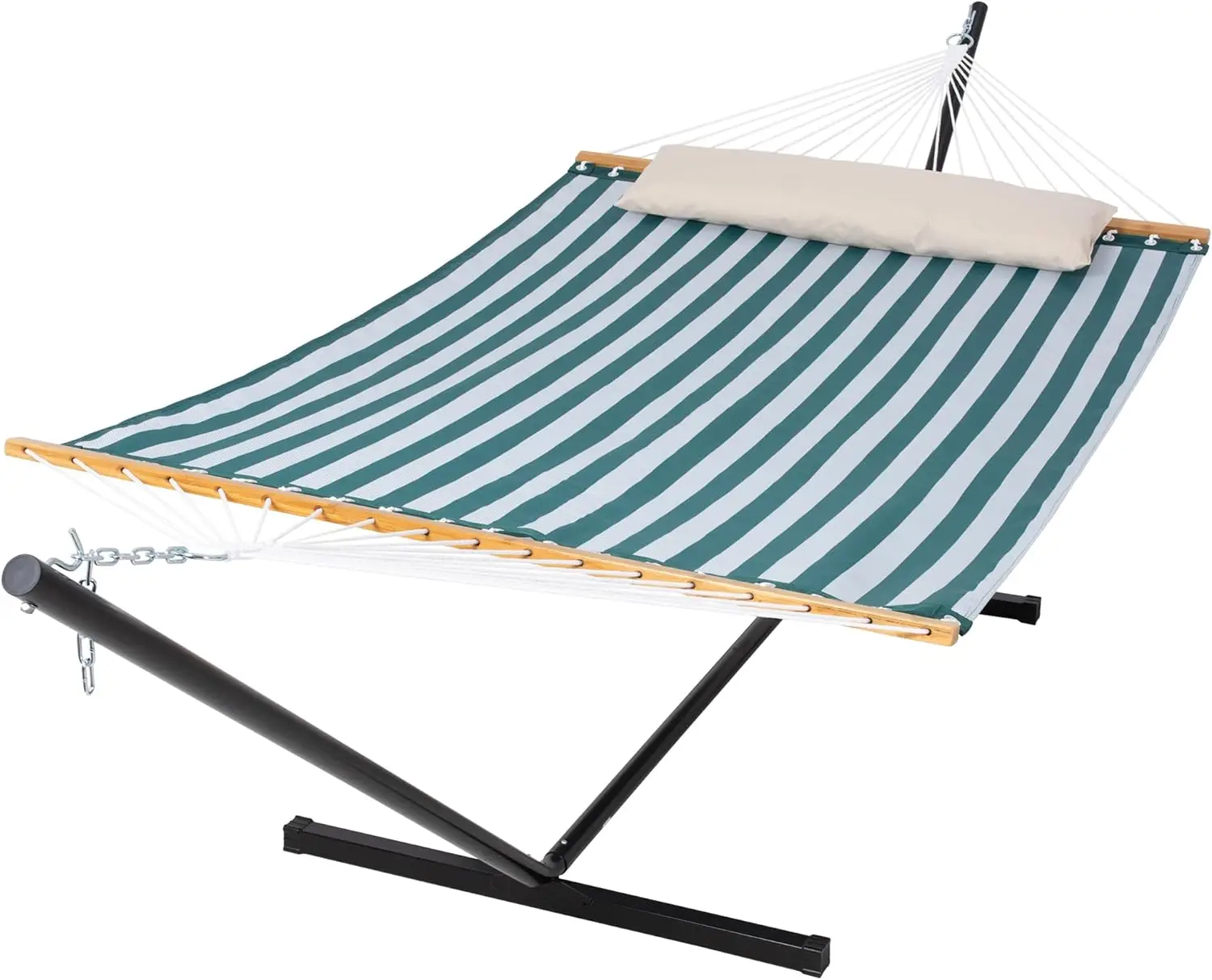
Best Ultralight Option: Sierra Feather Pro – For Weight-Conscious Backpackers
For long-distance hikers and backpackers counting every ounce, the Sierra Feather Pro offers remarkable protection at a fraction of the weight of standard systems.
Specifications:
| Feature | Details |
|———|———|
| Weight | 1.6 lbs (0.73 kg) |
| Packed dimensions | 5” × 7” × 3” (13 cm × 18 cm × 8 cm) |
| Hammock dimensions | 9.5’ × 4.5’ (290 cm × 137 cm) |
| Canopy coverage | 32 sq ft (3 sq m) |
| Materials | 20D ripstop nylon hammock, 15D silnylon rainfly, 15D ultralight mesh |
| Weight capacity | 275 lbs (125 kg) |
| Included accessories | Dyneema suspension straps, titanium toggles, stuff sack |
| Price range | $$$$ |
The Sierra Feather Pro achieves its ultralight status through strategic material choices and minimalist design without sacrificing essential protection. The integrated system uses high-tech lightweight fabrics that maintain impressive strength despite their minimal weight.
The rainfly provides adequate coverage for most conditions, though it doesn’t offer the extended protection of heavier models. The bug net features an innovative zipperless design using a simple overlap closure system that saves weight while maintaining insect protection.
Setup requires more attention to detail than heavier systems, with less margin for error in tensioning and positioning. However, once mastered, the process becomes efficient and repeatable even in challenging conditions.
Pros:
– Incredibly lightweight for a complete protection system
– Packs down extremely small
– Surprisingly durable despite thin materials
– Efficient suspension system minimizes weight
– Fast setup once learned
Cons:
– Less forgiving rainfly coverage in heavy storms
– Slightly tighter dimensions may not suit larger users
– Higher price-to-weight ratio
– Requires more care in handling
The Sierra Feather Pro is perfect for thru-hikers, backpackers, and anyone where weight savings justifies the premium price. Its ultralight design makes it barely noticeable in your pack while still providing the essential protections needed for comfortable wilderness sleep.
For similar lightweight options, browse our selection of lightweight hammock options for hikers and backpackers. Understanding proper care will help maintain your investment—learn about durability for outdoor exposure to maximize the lifespan of your ultralight system.
Best Value: Woodland Comfort Plus – Budget-Friendly Complete Protection
The Woodland Comfort Plus delivers impressive performance at a surprisingly accessible price point, making it our top value recommendation for those seeking quality protection without breaking the bank.
Specifications:
| Feature | Details |
|———|———|
| Weight | 3.7 lbs (1.68 kg) |
| Packed dimensions | 8” × 10” × 5” (20 cm × 25 cm × 13 cm) |
| Hammock dimensions | 9.5’ × 5’ (290 cm × 152 cm) |
| Canopy coverage | 38 sq ft (3.5 sq m) |
| Materials | 70D nylon hammock, polyurethane-coated polyester rainfly, polyester mesh |
| Weight capacity | 350 lbs (159 kg) |
| Included accessories | Tree straps, steel carabiners, stuff sack |
| Price range | $$ |
The Woodland Comfort Plus achieves its attractive price point by using slightly heavier but still highly effective materials. The polyester rainfly may not pack down as small as silnylon alternatives, but it provides reliable water protection and excellent UV resistance, potentially outlasting more expensive options.
The bug netting uses a slightly wider mesh pattern than premium models but remains effective against mosquitoes and other common insects. The system features a straightforward design with intuitive setup that’s perfect for beginners.
Comfort remains a priority with a spacious hammock body and diagonally-reinforced design that promotes a flatter sleeping position. The integrated ridgeline ensures consistent setup and proper bug net positioning every time.
Pros:
– Exceptional value for a complete protection system
– Durable materials may outlast lighter alternatives
– Simple, intuitive setup ideal for beginners
– Spacious dimensions accommodate larger users
– Reliable protection from rain and insects
Cons:
– Heavier than premium options
– Less refined detailing and fewer convenience features
– Bulkier when packed
– Limited color options
The Woodland Comfort Plus is perfect for occasional campers, beginners, or anyone seeking reliable protection without investing in premium ultralight materials. It’s an excellent choice for those entering the hammock camping world or for keeping as a guest option.
Understanding proper setup for safe hammock use becomes particularly important when using value-oriented systems, as correct installation maximizes their performance and longevity.
Most Weather-Resistant: Alpine Guardian Pro – For Extreme Conditions
When facing challenging weather scenarios, the Alpine Guardian Pro stands as the ultimate fortress against the elements, designed specifically for extreme conditions where lesser systems would falter.
Specifications:
| Feature | Details |
|———|———|
| Weight | 4.2 lbs (1.9 kg) |
| Packed dimensions | 8” × 11” × 6” (20 cm × 28 cm × 15 cm) |
| Hammock dimensions | 11’ × 5.5’ (335 cm × 168 cm) |
| Canopy coverage | 52 sq ft (4.8 sq m) |
| Materials | 70D ripstop nylon hammock, 40D silpoly rainfly (3000mm waterproof rating), No-See-Um mesh |
| Weight capacity | 400 lbs (181 kg) |
| Included accessories | Heavy-duty webbing straps, aircraft aluminum carabiners, storm guylines, stakes |
| Price range | $$$$$ |
The Alpine Guardian Pro features an oversized hexagonal rainfly with extended coverage that creates substantial protected space beyond the hammock itself. The silpoly material maintains consistent tension in all conditions—unlike nylon which can stretch when wet—ensuring protection even during prolonged precipitation.
All seams feature reinforced triple-stitching and are factory-taped to eliminate water penetration. The rainfly’s multiple tie-out points allow for various configuration options depending on wind direction and severity, while the included storm guylines provide exceptional stability in high winds.
The integrated bug net uses durable mesh that balances visibility with protection. An innovative ventilation system creates airflow pathways that minimize condensation even when fully battened down—a common issue with lesser weather-resistant designs.
Pros:
– Superior storm protection with extended coverage
– Multiple configuration options for different weather scenarios
– Exceptional stability in high winds
– Effective condensation management
– Durable materials throughout the system
– Spacious interior dimensions
Cons:
– Heaviest option among our recommendations
– Highest price point
– Overkill for casual or fair-weather use
– Requires more setup time to optimize protection
The Alpine Guardian Pro is ideal for mountaineers, adventure travelers facing unpredictable weather, and anyone who camps regularly in challenging environments. It’s the system of choice when reliability matters more than saving a few ounces.
Understanding important features in weather-resistant canopy designs can help you appreciate the engineering that goes into these specialized systems.
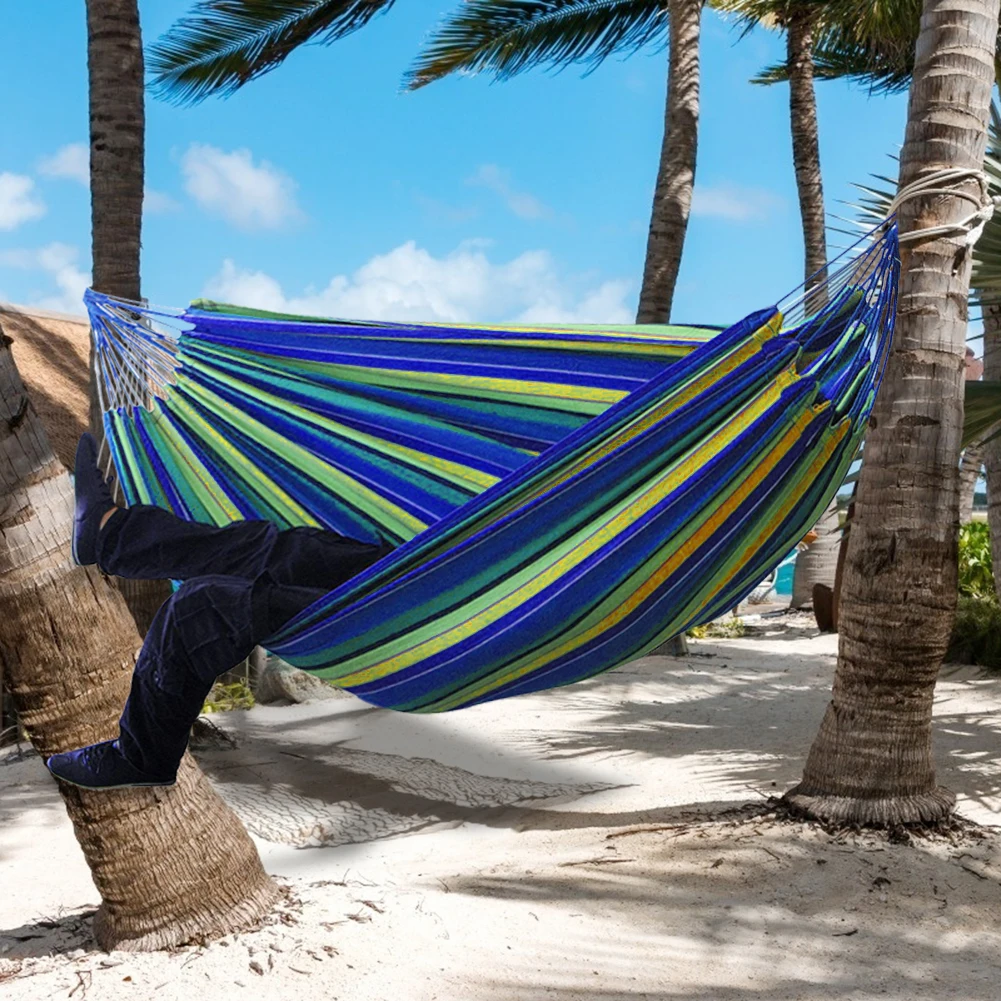
Most User-Friendly: Breeze Comfort Quick-Deploy – Easiest Setup and Adjustment
The Breeze Comfort Quick-Deploy system stands out for its remarkably intuitive design that eliminates the learning curve typically associated with hammock shelters, making it perfect for beginners and those who value simplicity.
Specifications:
| Feature | Details |
|———|———|
| Weight | 3.5 lbs (1.59 kg) |
| Packed dimensions | 7.5” × 9” × 5” (19 cm × 23 cm × 13 cm) |
| Hammock dimensions | 9.5’ × 5.2’ (290 cm × 158 cm) |
| Canopy coverage | 38 sq ft (3.5 sq m) |
| Materials | 70D breathable nylon hammock, 30D ripstop polyester rainfly, No-See-Um mesh |
| Weight capacity | 350 lbs (159 kg) |
| Included accessories | Daisy-chain adjustment straps, quick-connect buckles, integrated storage |
| Price range | $$$ |
The Breeze Comfort’s standout feature is its innovative “Quick-Deploy” system that allows the entire shelter—hammock, bug net, and rainfly—to be set up in under three minutes, even for first-time users. The color-coded connection points eliminate guesswork, while the integrated tensioning system automatically creates proper sag for comfortable sleeping.
The rainfly attachment uses a clever sliding clip design that allows rapid deployment or stowing depending on conditions. This system allows users to easily adapt to changing weather without leaving the comfort of their hammock. The bug net features a magnetic closure system that’s easier to operate than conventional zippers, especially when entering or exiting at night.
Another user-friendly feature is the integrated stuff sack that remains attached to the hammock, eliminating the risk of losing components and simplifying the packing process.
Pros:
– Incredibly fast and intuitive setup
– Clever quick-adjustment systems for rainfly tension
– No-hassle magnetic bug net closure
– Integrated storage prevents lost components
– Pre-set tensioning creates ideal comfort automatically
Cons:
– Slightly heavier than minimalist designs
– Limited customization options for experienced users
– Premium price for convenience features
– Proprietary components may be harder to replace
The Breeze Comfort Quick-Deploy is perfect for families, beginners, or anyone who values convenience over absolute weight savings. It’s also an excellent choice for those who frequently set up and take down their hammock system during mixed-weather trips.
For those interested in similar user-friendly designs, check out our collection of easy-setup options with integrated shade that emphasize simplicity without sacrificing protection.
Head-to-Head Comparison: Finding Your Perfect Match
When selecting an integrated canopy hammock, understanding how different models compare across key performance areas helps identify which system best matches your specific needs:
| Model | Price | Weight | Weather Protection | Bug Protection | Ease of Setup | Best For |
|---|---|---|---|---|---|---|
| Havana Pro Expedition | $$$$ | 3.2 lbs (1.45 kg) | ★★★★★ | ★★★★★ | ★★★★☆ | All-around performance |
| Sierra Feather Pro | $$$$ | 1.6 lbs (0.73 kg) | ★★★☆☆ | ★★★★☆ | ★★★☆☆ | Ultralight backpacking |
| Woodland Comfort Plus | $$ | 3.7 lbs (1.68 kg) | ★★★★☆ | ★★★★☆ | ★★★★☆ | Budget-conscious users |
| Alpine Guardian Pro | $$$$$ | 4.2 lbs (1.9 kg) | ★★★★★ | ★★★★★ | ★★★☆☆ | Extreme weather conditions |
| Breeze Comfort Quick-Deploy | $$$ | 3.5 lbs (1.59 kg) | ★★★★☆ | ★★★★☆ | ★★★★★ | Beginners & convenience |
When comparing these systems, consider your primary usage scenario. If you’re primarily backpacking, weight becomes a crucial factor, making the Sierra Feather Pro worth its premium price despite offering slightly less weather protection. For base camping or situations where weight is less critical, the enhanced weather protection and durability of the Alpine Guardian Pro may justify its additional weight and cost.
Finding the sweet spot between competing factors often comes down to honest assessment of your personal priorities. Understanding tips for optimal hammock positioning will help maximize the performance of whichever system you choose.
Essential Features: What Makes a Great Integrated Canopy Hammock
Canopy Design and Weather Protection
The rainfly or canopy serves as your primary defense against the elements, making its design and construction critical to overall performance. Look for asymmetrical hexagonal shapes that provide extended coverage over the hammock’s sides while allowing proper ventilation. Materials matter significantly—silnylon offers excellent waterproofing with minimal weight but can stretch when wet, while polyester maintains more consistent tension in wet conditions.
Waterproof ratings (measured in millimeters of hydrostatic head) indicate water resistance, with 1500mm being adequate for light rain and 3000mm+ necessary for serious storms. Quality seam sealing is equally important, as even the best material will leak through poorly sealed seams.
The tensioning system should include multiple tie-out points to allow adjustment for different weather conditions. Look for reinforced attachment points and included guylines for stability during windy conditions.
Bug Net Integration
Effective insect protection requires fine mesh that blocks even the smallest no-see-ums while maintaining visibility and airflow. The integration method matters significantly—some systems use zippered entry points, while others employ clever overlap or magnetic closure designs.
Bug net suspension typically uses either an integrated ridgeline (more stable, consistent height) or hoop system (more interior space, less head contact). The net should maintain proper distance from your body when lying in the hammock to prevent contact points where insects could bite through.
Hammock Body Comfort
The foundation of any system is the hammock itself. Material choice affects both comfort and durability—70D nylon provides excellent durability for regular use, while ultralight options may use 20D or even lighter fabrics that require more careful handling. The dimensional ratio of length to width significantly impacts sleeping comfort, with longer hammocks generally allowing flatter diagonal positioning.
Weight capacity should include a generous safety margin beyond your actual weight. Remember that dynamic movements can temporarily place much more stress on a hammock than static weight alone.
Suspension Systems
Tree-friendly straps should be at least 1 inch wide to prevent damage to bark. The adjustment mechanism—whether traditional knots, webbing with buckles, or cinch systems—affects both setup speed and the ability to fine-tune your position. Multiple attachment points on the hammock body (such as continuous loops or gathered ends with toggles) influence both comfort and setup versatility.
Portability Factors
While absolute weight matters significantly for backpacking, equally important is how compactly the system packs down. Compression stuff sacks help minimize packed volume, while integrated storage solutions prevent lost components. Consider not just the base weight but also what accessories might be necessary for your specific use case.
For those requiring significant weight support, our collection of hammock systems with integrated support offers sturdy options designed with stability in mind.
How to Choose the Right Integrated Hammock for Your Needs
For Backpacking and Thru-Hiking
When carrying your shelter for miles, weight becomes paramount. Prioritize ultralight systems under 2 pounds (0.9 kg) that still provide adequate protection. Accept rational compromises like slightly less rainfly coverage or simpler adjustment systems to save ounces.
Consider your typical conditions—if you primarily hike in fair weather with occasional showers, a minimalist system may suffice. For more challenging environments, the weight penalty of additional protection may be worthwhile. The Sierra Feather Pro exemplifies this balance, offering essential protection at minimal weight.
For Car Camping and Base Camp Use
When transportation to your site doesn’t require carrying gear long distances, prioritize comfort and feature-rich designs. Look for systems with spacious dimensions, extended rainfly coverage, and convenient features like interior storage pockets.
Durability becomes more important than absolute weight, making heavier but more robust materials a worthwhile investment. The Havana Pro Expedition or Alpine Guardian Pro would excel in these scenarios, offering comprehensive protection and comfort with less concern for packed weight.
For Backyard and Casual Use
For primarily residential settings, consider aesthetic appeal alongside functionality. Systems with multiple color options and cleaner designs may better complement your outdoor space.
Weather resistance needs vary based on your climate and whether the system will be set up permanently or temporarily. For seasonal installation, the Breeze Comfort Quick-Deploy offers convenience and good looks while maintaining proper protection.
For Year-Round or Extended Use
Those planning to use their hammock system across multiple seasons should prioritize adaptability and construction quality. Modular systems that allow component removal (such as using just the hammock and bug net in summer) offer versatility.
Material durability becomes crucial for extended use—look for reinforced stress points, higher denier fabrics, and robust hardware. The Alpine Guardian Pro or Havana Pro Expedition would serve well in these scenarios, with their premium construction and adaptable designs.
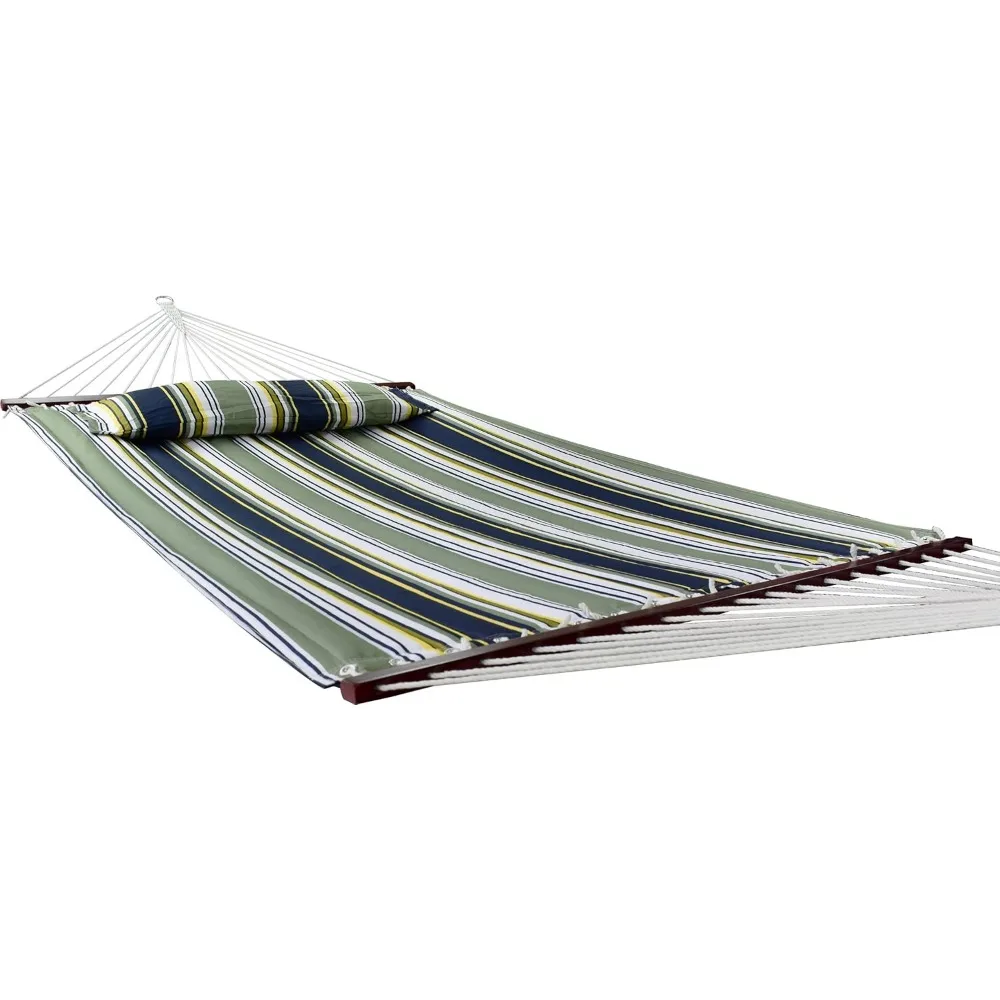
Choosing the right location significantly impacts your experience—learn more about optimal placement for different hammock types to maximize comfort and protection.
Essential Accessories: Completing Your Hammock System
Insulation Solutions
While integrated canopy hammocks protect you from above, they don’t address the critical issue of under-body heat loss. Hammock-specific underquilts provide the most efficient insulation by hanging beneath your hammock and creating a dead air space that traps body heat. Look for underquilts rated appropriate for your expected temperature range, with 20°F (-7°C) models offering three-season versatility in most climates.
For budget options or occasional cool weather use, specialized hammock sleeping pads offer an alternative. These typically feature wings or anti-slip surfaces to prevent shifting during the night—a common problem with regular sleeping pads.
Additional Weather Protection
For extreme conditions or extended trips, consider supplementary protection. Separate “weather shields” can be added under your hammock to block wind and provide additional splash protection during heavy storms. Extra-long guylines and stakes allow secure setup even in challenging terrain.
Storage Solutions
Maximize comfort by keeping essential items organized and accessible. Ridgeline organizers hang above you, providing convenient storage for headlamps, phones, and other small items. External gear slings suspend larger equipment beneath your hammock, keeping it accessible while freeing up interior space.
Comfort Enhancements
Small additions can significantly improve sleep quality. Hammock-specific pillows contour to the unique sleeping position, while structural ridgeline attachments can provide additional head and neck support. Drip lines—simple cords attached to your suspension—prevent rainwater from tracking down to your hammock during storms.
Enhance your setup with complementary accessories for enhanced shade protection that work alongside your integrated system for improved comfort in sunny conditions.
Camping Hammock Sets with Bug Net, Ultralight Camping Hammock Sets
$139.72 Select options This product has multiple variants. The options may be chosen on the product pageClassic Wooden Stand Hammock Sets, Heavy Duty Hammock Sets
$1,061.68 Select options This product has multiple variants. The options may be chosen on the product pageHammock Sets with Canopy, Heavy Duty Hammock Sets
$286.31 Select options This product has multiple variants. The options may be chosen on the product pageHeavy Duty Hammock Sets, Wooden Arc Stand Hammock Sets
$878.66 Select options This product has multiple variants. The options may be chosen on the product pageCamping Hammock Sets with Bug Net, Complete Camping Hammock Systems
Price range: $82.73 through $97.96 Select options This product has multiple variants. The options may be chosen on the product pageComplete Camping Hammock Systems, Hanging Egg Chair Sets
$266.73 Select options This product has multiple variants. The options may be chosen on the product page
Proper Setup: Maximizing Protection and Comfort
Site Selection
Finding the ideal location begins with identifying suitable anchor points—typically trees 12-15 feet (3.7-4.6 m) apart with diameters of at least 8 inches (20 cm) to ensure stability. Assess the ground beneath for drainage and potential hazards like sharp objects or ant hills. Consider natural wind patterns and position your hammock with the foot end facing prevailing winds to minimize rainfly disruption.
Optimal Hanging Technique
For most comfortable sleeping, hang your hammock with approximately 30 degrees of sag when unoccupied. This typically translates to hanging height around 18 inches (46 cm) off the ground—high enough to prevent ground contact when weighted but low enough for easy entry. The ideal distance between anchor points depends on your hammock length but typically ranges from 10-15 feet (3-4.5 m).
Always use tree-friendly straps at least 1 inch (2.5 cm) wide to distribute pressure and prevent bark damage. Position these straps at least 6 feet (1.8 m) high for proper clearance when the hammock is weighted.
Canopy Deployment
Position your rainfly to provide maximum coverage based on expected weather conditions. For rain protection, ensure the canopy extends at least 8 inches (20 cm) beyond your hammock on all sides. Tension the ridgeline first, then stake out the corners with enough tension to prevent sagging but not so tight that the material stretches excessively.
Orient your canopy with consideration for both sun protection and rain runoff—typically with the long axis aligned with your hammock. For extended protection during heavy rain, lower the sides closer to the ground to prevent splash-under.
Bug Net Optimization
Ensure your bug net fully encloses the hammock with no gaps at entry points. Deploy the net with sufficient space between it and your body—typically at least 4-6 inches (10-15 cm) above your face when lying down. Check for and eliminate any contact points where the mesh touches your hammock, as these create potential bite-through opportunities for determined insects.
Understanding safety considerations for proper hammock setup is essential for both comfort and preventing accidents or damage to your equipment.
Frequently Asked Questions
Can integrated hammock systems be used in winter conditions?
Most standard integrated systems work well for three-season use (spring through fall). For winter camping, you’ll need additional insulation—particularly an underquilt rated for low temperatures—and possibly a larger rainfly for snow protection. Some specialized four-season models exist with more robust weather protection and compatibility with winter insulation systems.
Are these systems comfortable for side sleepers?
Yes, but technique matters. Lying diagonally across the hammock (approximately 30 degrees off-center) creates a flatter sleeping surface that accommodates side sleeping well. Wider hammocks generally offer better side-sleeping comfort. Some users also add a thin sleeping pad for additional structure when side sleeping.
How do integrated systems compare to separate components in terms of versatility?
Integrated systems offer convenience and guaranteed compatibility but somewhat less modularity than separate components. Many quality integrated systems do allow component removal (using just the hammock in good weather, for example), striking a good balance. The best integrated systems offer nearly the same versatility as separate components with less complexity.
What’s the typical lifespan of an integrated hammock system?
With proper care, premium integrated systems typically last 5-7 years of regular use. The most common failure points are zippers, suspension components, and UV damage to fabrics (particularly rainflies). Proper storage when not in use significantly extends lifespan by preventing UV degradation and mildew issues.
Can the components (hammock, bug net, canopy) be used separately?
This varies by model. Most higher-end integrated systems allow modular use of components, while budget-friendly options may have permanently attached elements. Check the specific design—detachable bug nets and removable rainflies provide maximum versatility for different conditions.
How do you prevent condensation under the canopy?
Proper ventilation is key. Set up your rainfly with adequate height above the hammock to allow airflow. Use tie-outs to create space between the rainfly and bug net. In humid conditions, position your hammock so prevailing breezes can pass through the system. Some advanced rainflies include venting options specifically designed to reduce condensation.
Are these systems suitable for tall/large individuals?
Most standard integrated hammocks accommodate users up to 6‘2” (188 cm) and 250 lbs (113 kg) comfortably. For taller individuals or those requiring higher weight capacity, specialized options are available—look for hammocks at least 11 feet (335 cm) long and weight ratings of 350+ lbs (159+ kg). Our collection of options for high weight capacity needs offers solutions specifically designed for larger individuals.
Maintenance and Care: Extending the Life of Your Hammock System
Cleaning Guidelines
Different components require specific care approaches. For hammock bodies and bug nets, gentle hand washing with mild soap (never bleach or harsh detergents) is best. Rainflies typically need more specialized cleaning—use technical wash products designed for waterproof fabrics to avoid degrading DWR (durable water repellent) coatings.
Always clean your system before long-term storage, paying special attention to removing any organic material that could lead to mold or mildew. Allow components to air dry completely—direct sunlight is acceptable for brief drying periods, but avoid prolonged UV exposure which can degrade fabrics.
Proper Storage
Never store your hammock system while damp, as this guarantees mildew development. Store loosely in a breathable cotton or mesh bag rather than the small compression sack used for transport—this prevents long-term stress on fabrics and coatings. Keep in a cool, dry place away from direct sunlight and chemical exposure.
For long-term storage, consider hanging components loosely rather than keeping them compressed, which can permanently damage certain materials, particularly bug netting and insulation.
Field Repairs
A basic repair kit should include: tenacious tape for fabric tears, extra guyline, a sewing kit with heavy-duty thread, replacement cordage, and seam sealer. Common field issues include small tears (address immediately with repair tape before they expand), broken suspension components (carry extra cordage), and zipper problems (a small bottle of zipper lubricant helps prevent issues).
For significant damage affecting structural integrity or waterproofing, professional repair is recommended. Many premium hammock manufacturers offer repair services for their products.
Ready to Upgrade Your Outdoor Sleep System? (Conclusion)
Hammocks with integrated canopies represent the pinnacle of outdoor sleeping comfort combined with practical protection. These all-in-one systems transform the traditional hammock into a complete shelter solution—defending against sun, rain, and insects while maintaining the superior comfort hammocks are known for.
Throughout this guide, we’ve explored how these versatile systems can adapt to various needs:
- For lightweight backcountry adventures, the Sierra Feather Pro offers remarkable protection at minimal weight
- For those seeking maximum value, the Woodland Comfort Plus delivers comprehensive protection without the premium price
- When facing challenging weather, the Alpine Guardian Pro stands as an uncompromising shelter
- For simplicity and user-friendliness, the Breeze Comfort Quick-Deploy eliminates setup frustrations
- For balanced all-around performance, the Havana Pro Expedition excels across all categories
Your ideal system ultimately depends on your specific priorities—whether that’s absolute weight savings, maximum weather protection, budget consciousness, or setup simplicity. By carefully considering your intended use environment and personal preferences, you can select a system that will provide years of comfortable outdoor experiences.
Unlike traditional ground shelters, these elevated systems free you from concerns about rough or wet ground while providing a distinctly comfortable sleeping position that many outdoor enthusiasts find superior to tents. The integrated protection elements ensure you remain comfortable regardless of changing conditions—making hammock systems with integrated canopies the ultimate solution for discerning outdoor sleepers.

